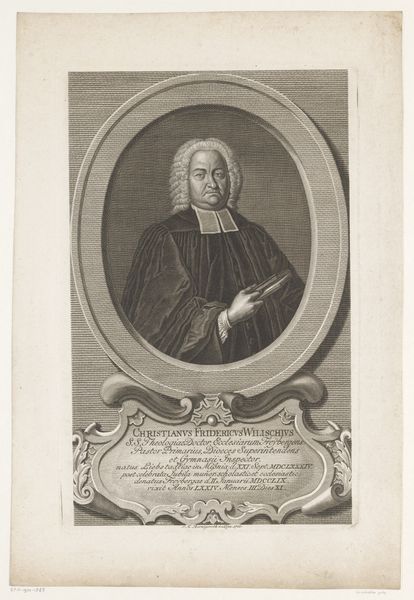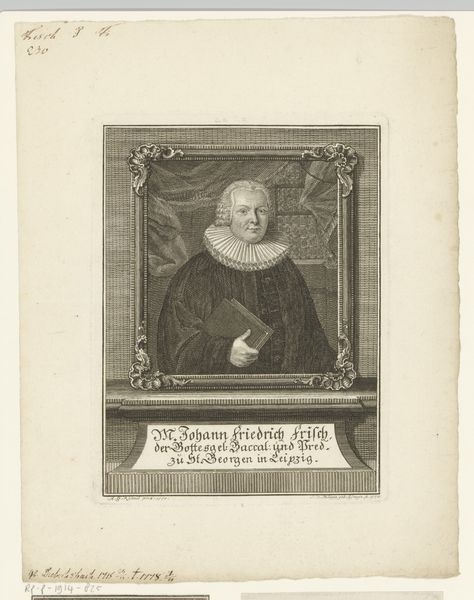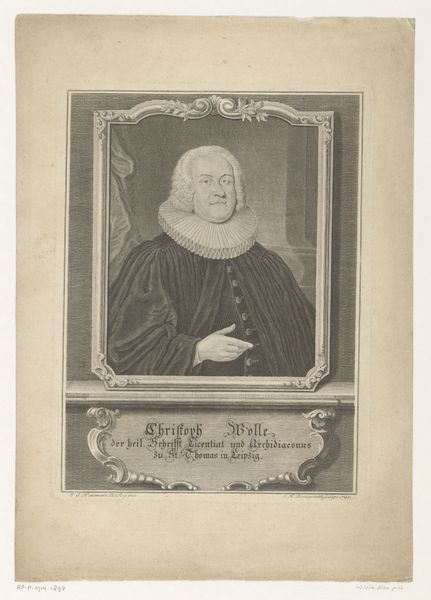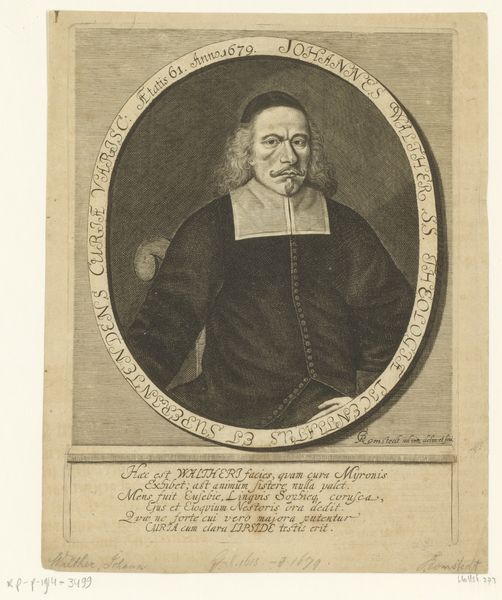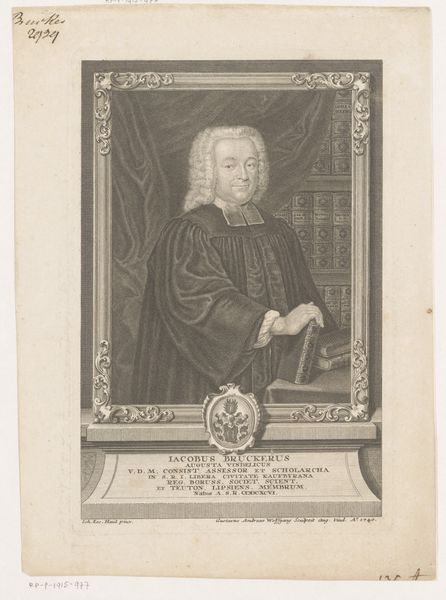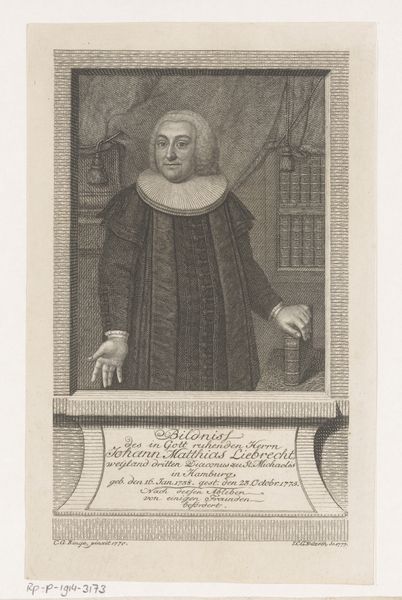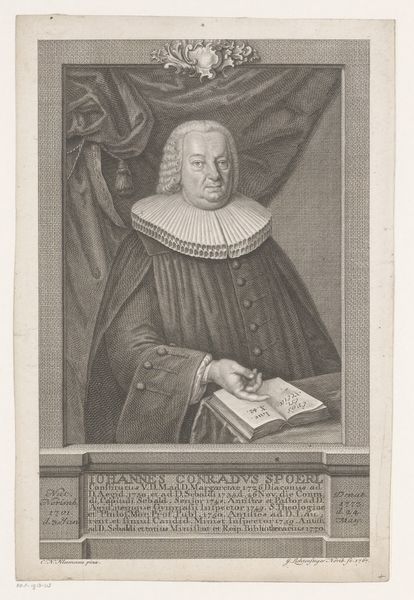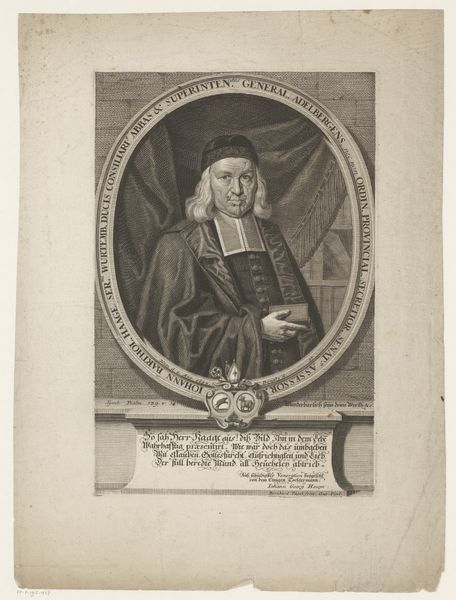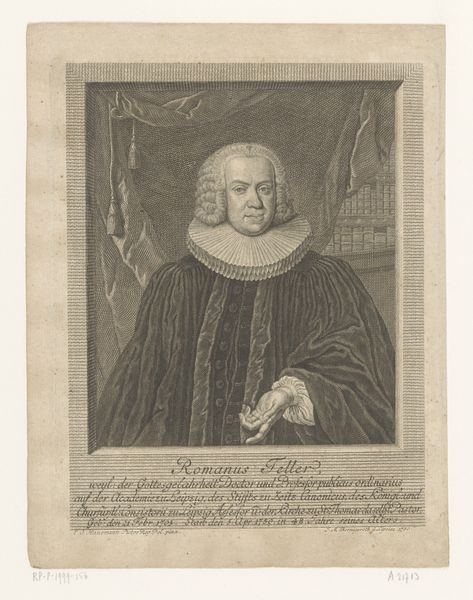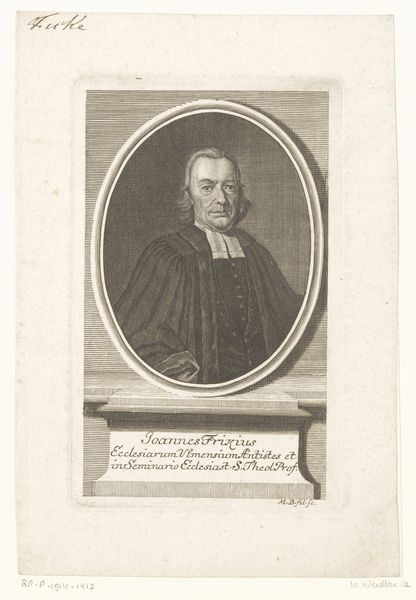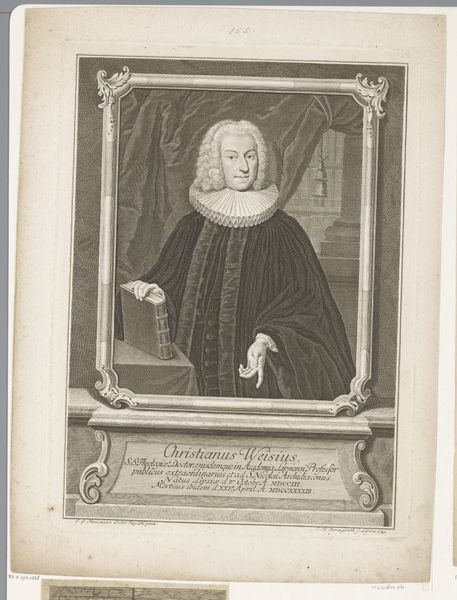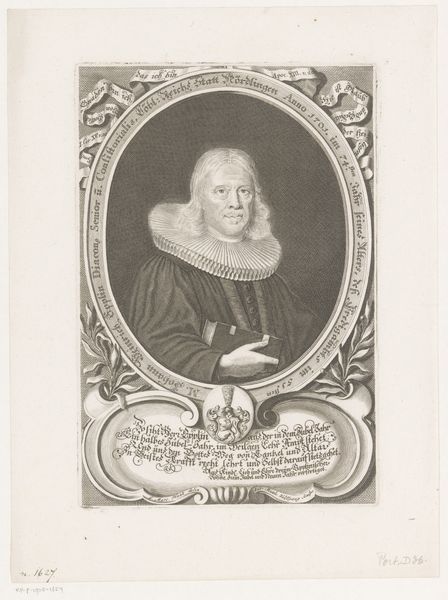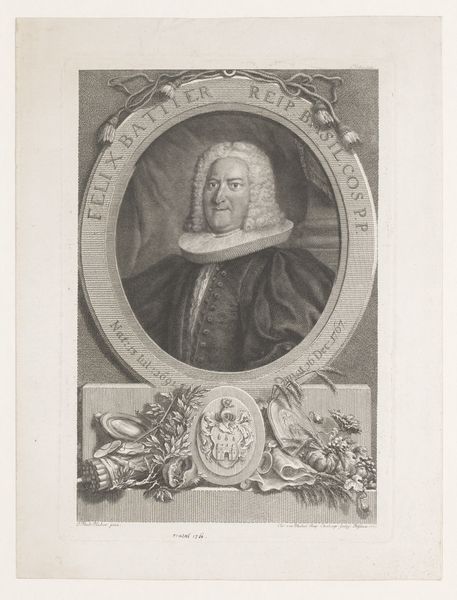
Dimensions: height 227 mm, width 175 mm
Copyright: Rijks Museum: Open Domain
Curator: This is "Portret van Johann Anderson," an engraving on paper crafted in 1788. Johann Christian Gottfried Fritzsch is the artist responsible for this intriguing baroque print, now held at the Rijksmuseum. Editor: Whoa, the detail in this piece is intense! At first glance, I'm really struck by the formality, the almost rigid composure, and those lines—they’re so crisp they could cut you! I almost get a sense that it's intended to broadcast status more than reflect genuine personality. Curator: Precisely. Its rigid composure is deeply rooted in the cultural context of 18th-century societal structures. These portrait engravings often served as important tools of self-fashioning and social mobility, reinforcing one’s public persona. Editor: Okay, okay, so less about showing 'warts and all' honesty, and more about presenting the right image. But, what exactly was his role? I see some inscription indicating the "Consul Hamburgensis", what did it mean? Curator: Right! He was Consul of Hamburg. In the complex political chessboard of the era, that positionality, specifically, as a Hamburg consul held considerable sway in shaping economic policy and geopolitical connections of that period, both locally and internationally. The attire he has carefully chosen is intended to transmit very specific ideas regarding wealth, social influence and even the subject's participation and relationship with current ideological powers and discussions. Editor: The wig looks so unnatural. Was it required to show that they were of importance, or were they of necessity? Why such big ruffles, and the need to almost be a character that looks uncomfortable for modern times? Curator: Think of them as communicative artifacts; these choices signified an allegiance to power structures deeply entrenched within society. The artifice reflected in dress and adornment underscores the careful construction of identity, speaking volumes about class, profession, and allegiance during a time of revolutionary and social upheavals. Editor: Ah, makes sense now—less comfy fashion choice, more political billboard! Well, I can say I definitely won't judge that man based on his looks without all of this information anymore. Curator: Exactly. When critically evaluating pieces like this engraving of Johann Anderson, it allows us an intersectional consideration of art history that bridges aesthetics and wider societal power dynamics, offering fresh insights that enrich the viewing experience. Editor: For sure. A picture is worth a thousand words... plus a socio-political analysis, apparently. I’m taking away so much more than what I would have had if I hadn't know the story!
Comments
No comments
Be the first to comment and join the conversation on the ultimate creative platform.
